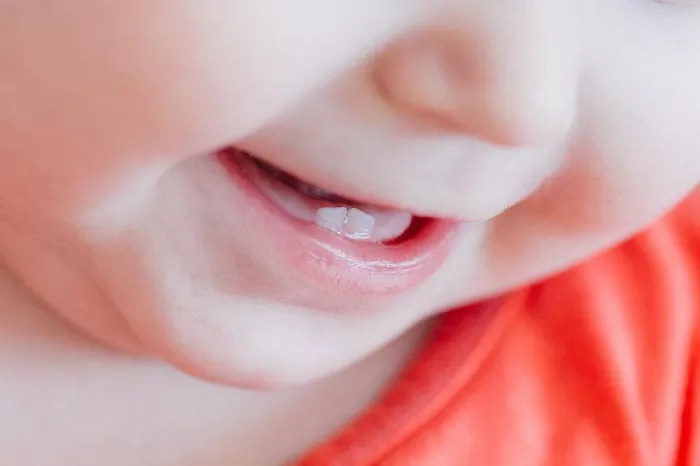The health of a child’s teeth is not only essential for a beautiful smile but also plays a vital role in their overall health. Regularly looking at your child’s teeth can help detect potential problems early, allowing for prompt treatment and preventing more serious dental issues in the future. Parents and caregivers should be proactive in monitoring the oral health of children, starting from infancy.
From Infancy to Toddlerhood
First Tooth Eruption:
When the first tooth begins to break through the gum, usually around 6 months of age, it’s time to start paying closer attention. Gently wipe the newly emerged tooth with a clean, damp cloth after each feeding to remove any plaque or bacteria. This simple step helps establish good oral hygiene habits early on.
Teething Discomfort:
During the teething process, which can last until around 2 to 3 years old, monitor for signs of discomfort such as excessive drooling, irritability, and a desire to chew on objects. While it’s normal for teething to cause some mild discomfort, severe pain or fever may indicate an underlying issue and should prompt a call to the pediatrician or dentist.
Dental Check-ups:
By the age of 1 or as soon as all the baby teeth have erupted, it’s advisable to schedule the first dental visit. This initial visit is mainly for the dentist to assess the overall oral health, provide guidance on proper home care, and identify any potential problems such as tooth decay or developmental abnormalities.
Preschool Years
Brushing Habits:
At this stage, children should be learning to brush their teeth independently with adult supervision. Check that they are using the correct amount of toothpaste (a pea-sized amount for children under 3, and a small smear for younger toddlers) and that they are brushing all surfaces of the teeth for at least two minutes, twice a day. Look for signs of proper brushing technique, such as circular motions and reaching all areas of the mouth.
Snacking Habits:
Observe the child’s eating and snacking patterns. Frequent consumption of sugary snacks and drinks can increase the risk of tooth decay. Encourage healthy snack choices like fruits, vegetables, and cheese, and limit the intake of candies, sodas, and sticky treats. If you notice any discoloration or spots on the teeth, it could be an early sign of decay and warrants a dental evaluation.
Tooth Alignment:
As the permanent teeth start to come in, usually around age 6, keep an eye on the alignment. Look for any signs of crowding, misalignment, or abnormal eruption patterns. Early detection of orthodontic issues can lead to more effective treatment options in the future.
School-Age Years
Daily Oral Care Routine:
Ensure that the child continues to maintain a consistent oral care routine. Check that they are flossing regularly, in addition to brushing. Flossing helps remove plaque and food particles from between the teeth, where a toothbrush may not reach.Make it a part of their bedtime routine and supervise to ensure it’s done correctly.
Sports and Mouthguards:
If the child participates in sports, it’s important to provide a properly fitted mouthguard to protect the teeth from injury. Inspect the mouthguard regularly for any signs of wear or damage and replace it if necessary. Also, check for any dental trauma after sports activities, such as chipped or loosened teeth.
Dental Check-ups:
Regular dental visits every six months are essential during the school-age years. These visits allow the dentist to perform professional cleanings, detect cavities or gum problems early, and provide preventive treatments like fluoride applications and sealants. Encourage the child to communicate any concerns or discomfort they may have with their teeth to the dentist.
Adolescence
Orthodontic Treatment:
Many adolescents undergo orthodontic treatment to correct any remaining or newly developed alignment issues. Monitor the progress of the braces or other orthodontic appliances and ensure the child is following the dentist’s instructions regarding care and diet restrictions. Look for any signs of irritation or damage to the gums or cheeks caused by the appliances.
Oral Hygiene during Puberty:
Hormonal changes during puberty can increase the risk of gum problems. Encourage the adolescent to be extra vigilant about their oral hygiene, including brushing, flossing, and using mouthwash. Check for any signs of swollen, bleeding, or tender gums, which may indicate the need for a professional dental cleaning or further evaluation.
Wisdom Teeth:
As the wisdom teeth start to emerge, usually in the late teens or early twenties, keep an eye out for any signs of pain, swelling, or difficulty opening the mouth. Wisdom teeth can often cause problems such as impaction or infection, and early detection can help determine if extraction is necessary.
Conclusion
Regularly looking at your child’s teeth is a simple yet crucial aspect of parenting that can have a significant impact on their oral and overall health. By being vigilant at each stage of their development, from infancy through adolescence, parents can identify potential problems early and take appropriate action. This includes establishing good oral hygiene habits, monitoring for signs of decay or alignment issues, and ensuring regular dental check-ups. Remember, a healthy smile is not only aesthetically pleasing but also contributes to a child’s self-esteem and quality of life. By taking the time to care for your child’s teeth, you are investing in their future health and well-being.

